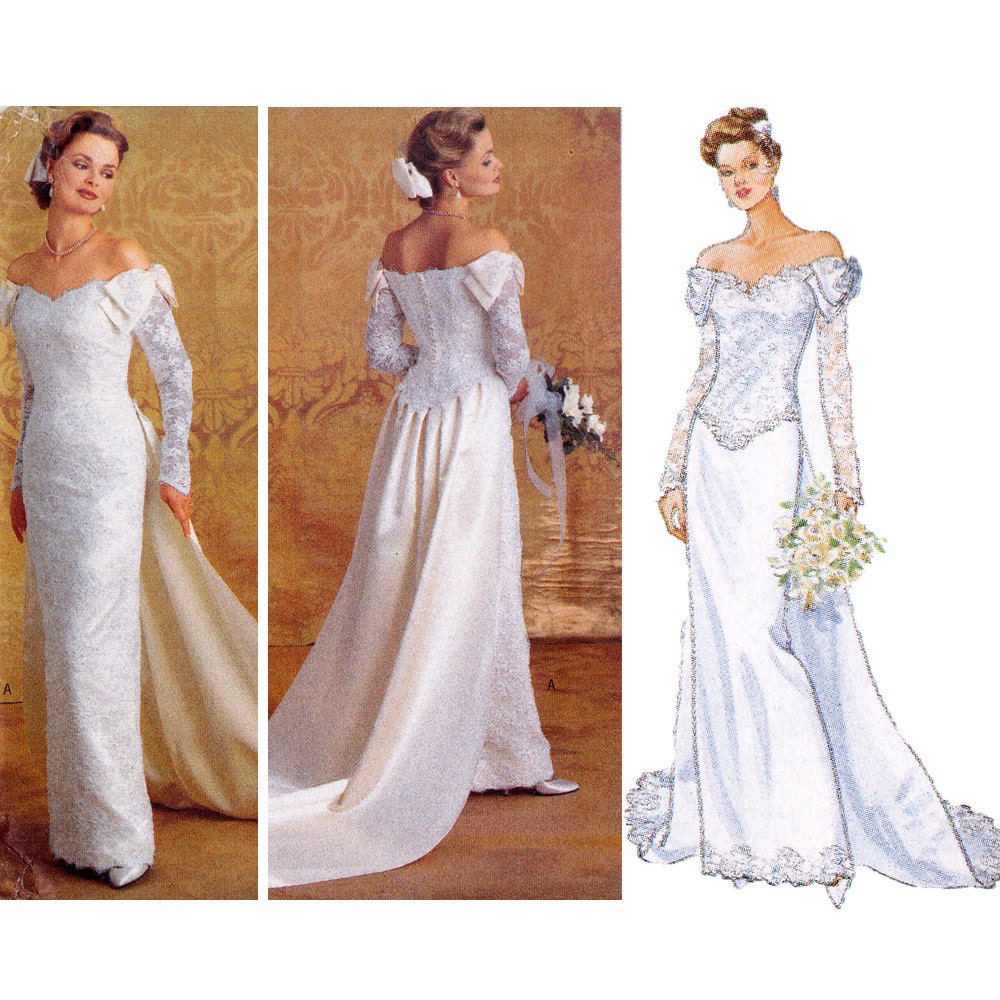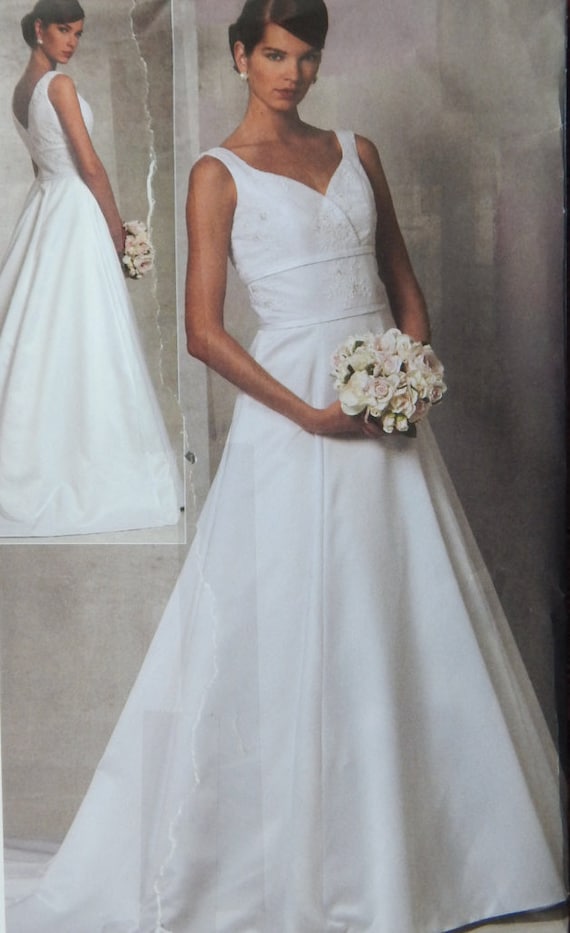Sewing patterns
Table of Contents
Table of Contents
Wedding season is upon us, and whether you’re a bride-to-be or someone who loves to sew, it’s a great time to explore wedding dresses sewing patterns. There’s something incredibly special about creating your own wedding dress, and with the right pattern, you can make a gown that perfectly suits your style and the occasion. In this article, we’ll take a deep dive into wedding dresses sewing patterns and what you need to know about them.
Why Wedding Dresses Sewing Patterns Can Be Challenging
When it comes to sewing a wedding dress, the stakes are higher than usual. This is a garment that needs to fit perfectly, be comfortable for hours on end, and look absolutely stunning. Plus, wedding dresses can have some unique design challenges: think intricate beading, delicate lace, and long trains. It can be a daunting task to try to sew something so important from scratch.
Understanding Wedding Dresses Sewing Patterns
So, what exactly are wedding dresses sewing patterns? At their most basic level, they’re paper or digital guides that help you create your own dress. They include all the pattern pieces you’ll need, as well as instructions for how to cut and sew the fabric together. They can come in a variety of styles, from ballgowns to sheath dresses, and can include different types of necklines, sleeves, and back closures. The key is to find a pattern that matches your vision for your dress.
Benefits of Creating Your Own Wedding Dress
There are so many reasons why sewing your own wedding dress can be a great option. First, you’ll have complete control over the design: from the silhouette to the fabric choice to the finishing details. You won’t have to compromise on anything! Plus, sewing your own dress can also be more affordable than buying one off-the-rack. And most importantly, you’ll have a dress that’s truly one-of-a-kind and made with love.
Choosing the Right Wedding Dresses Sewing Patterns
When it comes to choosing a wedding dress sewing pattern, it’s important to consider a few key factors. First, think about your skill level: are you an experienced seamstress or a beginner? Look for patterns that match your skill level, as well as those that have clear instructions and diagrams. Next, think about the style of dress you want to make. Do you want a dramatic ballgown, a sleek sheath dress, or something in between? Finally, consider the fabrics you want to use: some patterns are better suited for lightweight fabrics, while others can handle heavier or structured fabrics.
Tips for Sewing a Wedding Dress with Plunging Neckline
If you’ve decided to tackle a wedding dress sewing pattern with a plunging neckline, there are a few things to keep in mind. First, make sure you choose a good-quality fabric that will hold its shape and not stretch out over time. It’s also important to invest in a good strapless bra or sew one into the dress itself. And if you’re feeling really adventurous, consider adding some illusion netting or lace to the neckline to keep everything in place.
Sewing a Train for Your Wedding Dress
If you want to add a train to your wedding dress, it can be a beautiful and dramatic touch. But it’s important to sew it correctly so that it falls the way you want it to. Start by choosing a fabric that’s appropriate for draping, such as a lightweight chiffon or silk. Then, cut the train pieces according to your pattern instructions and sew them together. Be sure to understitch the lining to the fabric so that it stays in place. Finally, add a bustle so that you can dance the night away without tripping over your train.
FAQs About Wedding Dresses Sewing Patterns
1. Can I alter a wedding dress sewing pattern to fit me better?
Yes, most patterns can be altered to fit your body better. You can make adjustments to the bust, waist, hips, and length to make sure the dress fits you like a glove.
2. How much fabric do I need for a wedding dress?
This will depend on the specific pattern you’re using, as well as the size of the dress. Generally, you can find fabric yardage recommendations on the pattern itself.
3. Do I need any special equipment to sew a wedding dress?
Not necessarily, but there are a few tools that can be helpful. A dress form can make it easier to fit the dress as you sew, while a serger can help you finish seams neatly. And if you’re working with delicate fabrics, a rotary cutter and mat can be gentler than scissors.
4. How long does it take to sew a wedding dress?
This will depend on the complexity of the pattern and the amount of beading or embellishments you’re adding. However, most wedding dress sewing projects will take at least a few weeks, if not several months. Be sure to give yourself plenty of time to work on the dress so that you’re not rushing to finish it at the last minute.
Conclusion of Wedding Dresses Sewing Patterns
Sewing your own wedding dress can be a challenging but rewarding project. With the right pattern, helpful tips and tricks, and plenty of patience, you can create a gown that’s as unique and beautiful as you are. Whether you’re an experienced seamstress or a novice, it’s worth exploring wedding dresses sewing patterns to see what kind of dress you can create!
Gallery
Sewing Patterns - Deals On 1001 Blocks

Photo Credit by: bing.com / abiti cartamodelli sposa zipzapkap cartamodello cerimonia butterick abito pourfemme 1001 blocks chirurgiaunita2018
Bridal Gown Sewing Pattern Optional Train/ Vogue 1163 Bridal

Photo Credit by: bing.com / bridal sewing optional gown pattern
FREE Wedding Dress Sewing Patterns - My Handmade Space

Photo Credit by: bing.com / patterns wedding dress sewing diy sewyourtv pattern sew schnittmuster brautkleid hochzeitskleid nähen handmade space making bag kostenlos gowns crochet formal
Rubyolivedesigns: Designer Wedding Dress Sewing Patterns

Photo Credit by: bing.com / mccall mccalls bodice column jurken missers trompet trumpet mouw figswoodfiredbistro theatrical patternpostie robes couleur mccallpattern
New Sewing Pattern Simplicity 3502 Day Evening Wear Halter | Etsy In

Photo Credit by: bing.com /





